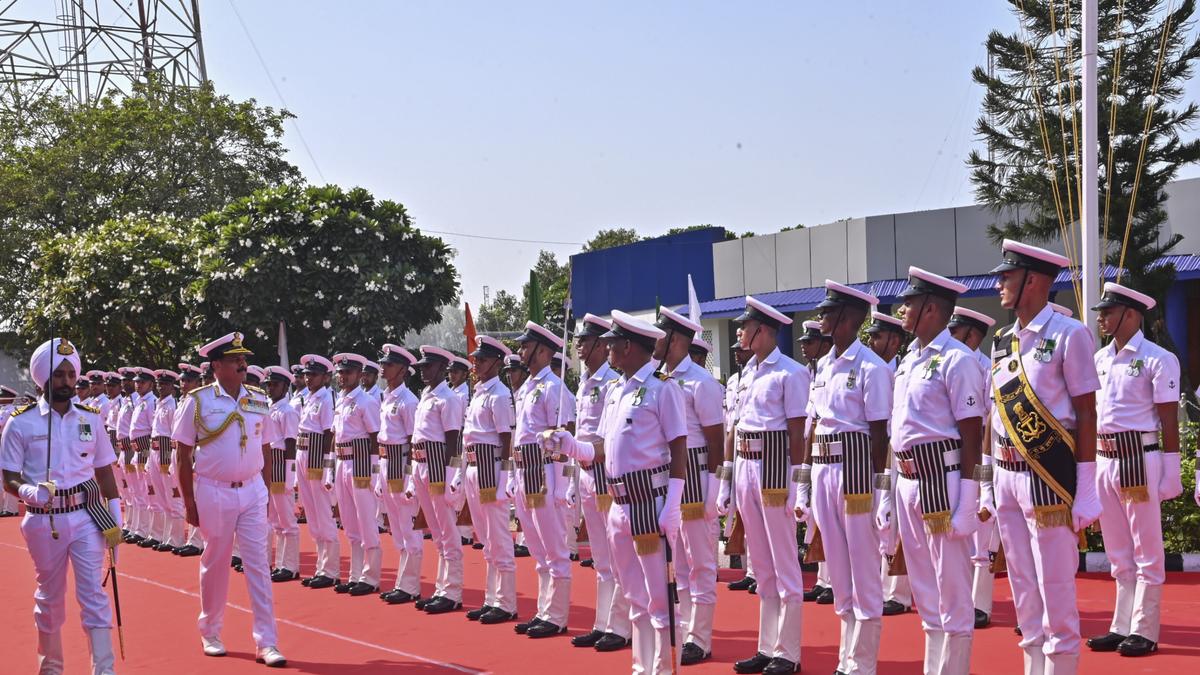India–Mauritius Relations
- 15 Sep 2025
In News:
- India and Mauritius share a unique relationship anchored in history, culture, and strategic convergence in the Indian Ocean Region (IOR). The visit of Mauritius Prime Minister Navinchandra Ramgoolam to Varanasi in 2025 marked a new milestone, with India announcing a USD 680 million Special Economic Package.
- The package seeks to strengthen bilateral cooperation in infrastructure, defence, maritime security, and cultural ties, while reinforcing India’s role as a key development and security partner in the region.
Key Features of the Special Economic Package (2025)
- Infrastructure Development: At least 10 projects, including completion of the new Air Traffic Control (ATC) tower at SSR International Airport, expansion of highways and ring roads, and the development of Motorway M4.
- Healthcare & Education: Establishment of new schools and hospitals.
- Maritime Cooperation: Redevelopment of Port Louis into a stronger maritime hub, and agreements on hydrography for joint surveys and navigation charts of Mauritius’ Exclusive Economic Zone (EEZ).
- Chagos Archipelago Engagement: In-principle agreement for joint surveillance of the Chagos Marine Protected Area, where the Diego Garcia base (operated by the US-UK) is located. India strongly backed Mauritius’ sovereignty claims, consistent with its support for decolonisation.
- Trade Facilitation: Bilateral trade in local currencies to be enabled, following the launch of UPI and RuPay cards in Mauritius.
- Security Partnership: India reaffirmed its role as Mauritius’ “first responder” and “net security provider” in the Indian Ocean, providing hydrographic support, refitting Mauritius Coast Guard ships, and training personnel.
Historical and Cultural Ties
- Migration: Indian migration to Mauritius began under French rule (1700s) and intensified during British rule post-1834, when nearly 500,000 indentured labourers arrived, most of whom settled permanently.
- Demographics: Today, about 70% of Mauritius’s population (1.2 million) is of Indian origin, strengthening cultural and familial bonds.
- National Day: Mauritius celebrates its National Day on March 12, coinciding with Mahatma Gandhi’s Dandi March, reflecting its deep-rooted civilizational connect with India.
Economic and Commercial Relations
- Trade: In FY 2022–23, bilateral trade stood at USD 554.19 million, with Indian exports at USD 462.69 million.
- FDI: Mauritius remains a significant investor in India—second-largest source of FDI (FY 2023–24) after Singapore.
- CECPA (2021): The Comprehensive Economic Cooperation and Partnership Agreement was India’s first trade agreement with an African country, expanding market access in goods, services, and investment.
- DTAA (1982): While the Double Taxation Avoidance Agreement facilitated investments, it also raised concerns of misuse for money laundering and round-tripping.
Defence and Security Cooperation
- India is Mauritius’ preferred defence partner, supplying platforms like Dornier aircraft and Advanced Light Helicopters (Dhruv), along with a USD 100 million Line of Credit for defence procurement.
- Joint patrolling, hydrographic surveys, and capacity building highlight the depth of security ties.
- The Agaléga Island Projects (airstrip and jetty, inaugurated in 2024) enhance maritime domain awareness and India’s strategic reach in the southwest Indian Ocean.
Strategic Significance of Mauritius for India
- Geopolitical Location: Mauritius, located 800 km east of Madagascar, is a crucial node for maritime security and trade in the Indian Ocean.
- Countering China: China’s growing influence, marked by its 2021 FTA with Mauritius under the Belt and Road Initiative (BRI), necessitates stronger India–Mauritius collaboration.
- Blue Economy: Mauritius’ EEZ expansion (post-treaty with the UK over Chagos) provides new opportunities in fisheries, offshore energy, and maritime resources, where India is a preferred partner.
- Regional Cooperation: Mauritius is active in the Indian Ocean Rim Association (IORA), aligning with India’s SAGAR vision—“Security and Growth for All in the Region”—and Vision MAHASAGAR.
Sarcoidosis
- 15 Sep 2025
In News:
- Sarcoidosis is a chronic inflammatory diseasecharacterised by the formation of granulomas—small clusters of immune cells—in multiple organs, most commonly the lungs and lymph nodes.
- The condition has a highly variable clinical course, ranging from asymptomatic or mild presentations to severe, life-threatening complications.
- Recent peer-reviewed studies, including those published in Nature Reviews Disease Primers,emphasise the importance of early diagnosis, timely intervention, and awareness of risk factors in improving patient outcomes.
Causes and Risk Factors
- The exact cause of sarcoidosis remains unknown, but evidence points towards a combination of genetic susceptibility, immune system overactivity, and environmental triggers.
- Possible stimuli include bacteria, viruses, dust, and chemical exposure. Certain gene variations may predispose individuals, with the immune system reacting abnormally, leading to chronic inflammation and granuloma formation.
Symptoms and Clinical Manifestations
Symptoms vary depending on organ involvement:
- Pulmonary (most common): persistent cough, shortness of breath, chest pain; advanced cases may progress to pulmonary fibrosis and respiratory failure.
- Skin: rashes, bumps, or nodules; tender sores (erythema nodosum).
- Eyes: redness, pain, blurred vision.
- Cardiac: irregular heartbeats, heart failure.
- Neurological: seizures, facial paralysis, or peripheral nerve damage.
Some patients remain asymptomatic, with the disease detected incidentally during routine examinations.
Diagnosis
Diagnosis requires a combination of clinical evaluation, imaging, and biopsy.
- Chest X-rays/CT scans often reveal characteristic granuloma patterns.
- Biopsy confirms non-caseating granulomas, distinguishing sarcoidosis from infections and malignancies.
- Blood tests and lung function tests help assess disease activity and organ damage.
Treatment Approaches
There is no definitive cure for sarcoidosis, but management depends on severity and organ involvement:
- Mild/asymptomatic cases: often require only observation and regular monitoring.
- Moderate to severe cases: treated with corticosteroids (e.g., prednisone) to suppress inflammation.
- Refractory cases: immunosuppressive agents (methotrexate, azathioprine) or biologic therapies targeting immune pathways.
Long-Term Outlook
The prognosis is highly variable:
- Many cases resolve spontaneously within a few years.
- Others may become chronic, causing permanent lung scarring, cardiac complications, or organ dysfunction.
- Early detection and continuous monitoring remain critical to preventing irreversible damage.
Public Health Relevance
Sarcoidosis highlights the complex interaction between genetics, immunity, and environment. Its unpredictable nature underlines the need for:
- Awareness campaigns for early recognition of symptoms.
- Strengthening diagnostic infrastructure in primary healthcare.
- Research on genetic predispositions and immunological mechanisms to develop targeted therapies.
Doctrine of Contributory Negligence

- 15 Sep 2025
In News:
The Andhra Pradesh High Court has recently clarified that the doctrine of contributory negligence cannot be invoked as a defence in criminal prosecutions. It held that a person driving rashly and negligently, causing death, will be held liable under Section 304A of the Indian Penal Code (IPC), even if the victim was partly negligent. This landmark ruling reinforces the distinction between civil liability for damages and criminal liability for offences.
Doctrine of Contributory Negligence: Concept
- Contributory negligence rests on the principle that every individual must exercise reasonable care for their own safety.
- If an injured party’s negligence contributes to the harm, they may be considered partly responsible.
- The doctrine stems from the legal maxim “Volenti non fit injuria” — one who consents to risk cannot later claim damages.
- Example: If a pedestrian crosses the road carelessly and is hit by a rash driver, the pedestrian’s conduct may reduce their claim for compensation in civil law.
Civil Law vs. Criminal Law Application
- Civil Law:
- Contributory negligence acts as a defence, reducing damages payable by the defendant.
- Indian courts often apply the principle of comparative negligence, apportioning liability based on the degree of fault of each party.
- Burden of proof lies on the defendant to show that the plaintiff’s negligence contributed to the harm.
- Criminal Law:
- The AP High Court clarified that contributory negligence is not a defence to criminal liability.
- Section 304A IPC punishes causing death by rash or negligent act, irrespective of victim’s conduct.
- Even if the victim was negligent, the accused cannot escape responsibility if their rashness directly caused the death.
Judicial Reasoning and Precedent
- Criminal liability is premised on breach of legal duty and societal responsibility, not merely individual claims of fairness.
- If contributory negligence were allowed as a defence in criminal law, it could dilute accountability and weaken deterrence against rash driving.
- By upholding strict liability under Section 304A IPC, the court reinforced that public safety outweighs individual contributory fault.
Indian Legal Position
- India does not have a codified statute on contributory negligence; instead, principles are derived from common law and judicial interpretation.
- In civil cases, courts exercise discretion to distribute damages fairly.
- In criminal prosecutions, however, the focus remains on the offender’s culpability, not the victim’s carelessness.
Significance of the Ruling
- Public Safety: Strengthens accountability for rash driving and negligent acts, a major cause of road fatalities in India.
- Doctrinal Clarity: Clearly separates the scope of contributory negligence in civil law from its inapplicability in criminal law.
- Victim-Centric Approach: Ensures justice is not denied to victims’ families on grounds of partial fault.
- Judicial Consistency: Aligns with the principle that criminal law serves deterrence and social protection, unlike civil law which primarily compensates.
Border Wing Home Guards

- 15 Sep 2025
In News:
The Union Ministry of Home Affairs (MHA) is contemplating the deployment of Border Wing Home Guards (BWHG) along the India–China border, on the lines of their existing role along the India–Pakistan border. This move reflects India’s evolving approach to border management, civilian participation in security, and augmentation of regular forces like the Indo-Tibetan Border Police (ITBP).
About Border Wing Home Guards (BWHG)
- Legal Framework: Home Guards are constituted under the Home Guards Act and Rules of States/Union Territories.
- Authorised States: Seven states have been authorised to maintain BWHGs — Meghalaya, Tripura, Assam, West Bengal, Punjab, Rajasthan, and Gujarat.
- Current Status: Presently, Rajasthan is the only state with active BWHGs.
- Tenure & Duties: Members are usually enlisted for 3–4 years, perform responsibilities similar to police constables, and receive training with 25% of costs borne by the Central Government.
Recruitment and Composition
- Open to individuals from all classes and walks of life, who volunteer their spare time for community and national service.
- Trained to act as a reserve force, capable of rapid mobilisation during border crises and emergencies.
Roles and Responsibilities
- Border Security:
- Act as ancillaries to the Army and ITBP.
- Assist in guarding vital installations, vulnerable areas, and border outposts, particularly during hostilities.
- Internal Security:
- Serve as an auxiliary to the police during law-and-order situations.
- Help in maintenance of essential services, disaster management, and crowd control.
- Community Support:
- Provide assistance during natural calamities such as earthquakes, floods, cyclones, and epidemics.
- Promote communal harmony and support protection of vulnerable sections of society.
- Operational Experience:
- Played a key role in information collection and dissemination during Operation Sindoor.
- Used effectively in intelligence support and area familiarisation along sensitive borders.
Strategic Relevance Along the China Border
- Force Multiplier: Deployment of BWHGs can supplement the ITBP and Army in surveillance, information gathering, and local liaison in border villages.
- Civil–Military Synergy: Encourages participation of local communities in security efforts, thereby improving intelligence flow and fostering trust.
- Cost-Effective Option: As they are part-time volunteers with limited tenure, they reduce the financial burden compared to raising additional paramilitary units.
- Border Management: Their presence may strengthen village defence networks in frontier areas, countering infiltration and enhancing preparedness.
INS Aravali

- 15 Sep 2025
In News:
The Indian Navy has recently commissioned INS Aravali, its latest naval base, at Gurugram, Haryana. Named after the ancient Aravali mountain range, the establishment is envisaged as a nerve centre for command, control, and Maritime Domain Awareness (MDA) operations, marking a significant stride in India’s maritime security architecture.
Strategic Importance
INS Aravali is designed to enhance the Navy’s information and communication infrastructure, which is central to modern maritime operations. Located in Gurugram—close to the national capital—it will support real-time decision-making, inter-agency coordination, and domain awareness across the vast Indian Ocean Region (IOR). This reflects India’s aspiration to position itself as the Preferred Security Partner in the IOR amidst evolving geopolitical challenges.
Motto and Vision
Guided by the motto “Maritime Security through Collaboration”, INS Aravali embodies a cooperative approach to maritime defence. It seeks synergy between naval information centres, maritime agencies, and allied stakeholders. The base also aligns with India’s broader strategic vision of MAHASAGAR (Mutual and Holistic Advancement for Security and Growth Across Regions), which underlines collaborative security and regional growth.
Symbolism and Identity
The crest of INS Aravali carries deep symbolism:
- A central mountain signifies the resilience and enduring strength of the Aravali Range.
- A rising sun reflects eternal vigilance, renewal, and the dawn of technological advancement in naval communications.
Together, they highlight the base’s mission to combine steadfastness with innovation in safeguarding India’s maritime interests.
Role in Maritime Domain Awareness (MDA)
MDA has become indispensable in an era of increasing threats, including piracy, illegal fishing, smuggling, cyber vulnerabilities, and grey-zone conflicts. INS Aravali’s role is to integrate satellite-based monitoring, coastal radar networks, information fusion, and real-time communication to ensure seamless surveillance of India’s maritime domain. It also supports the Navy’s partnerships with regional navies, reflecting the Indo-Pacific emphasis on collaborative security.
Broader Significance
- National Security: Enhances India’s capability to respond rapidly to maritime threats and secure sea lanes of communication, vital for trade and energy security.
- Regional Diplomacy: Strengthens India’s profile as a net security provider in the Indian Ocean, reinforcing strategic trust among neighbouring littoral states.
- Technological Edge: Demonstrates the Navy’s focus on modern information infrastructure and cyber-resilient systems to address multi-dimensional security challenges.
- Civil-Military Integration: Showcases participatory security governance by working with other agencies, reflecting a whole-of-government approach.
